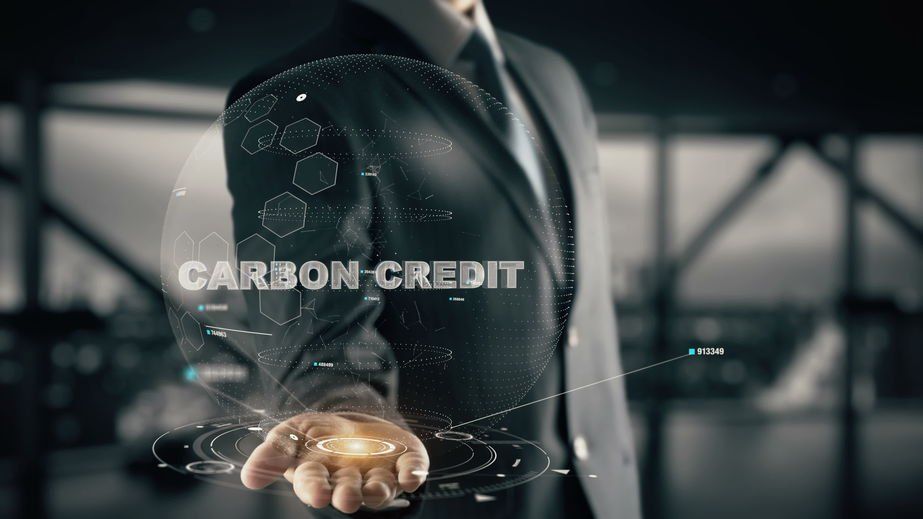Table of Contents
With climate change being one of the most pressing environmental issues of our time, it’s important that we find ways to mitigate the effects of carbon emissions. Carbon mitigation systems are one of the most effective ways to do this, as they can drastically reduce the amount of carbon dioxide in the atmosphere. In this article, we’ll discuss the different types of carbon mitigation systems and how they can help protect the environment.
Carbon mitigation systems are designed to reduce or offset the amount of carbon emitted by businesses. They work by using a variety of techniques such as capturing carbon dioxide from the air and using it as a fuel material or converting it to a solid for storage, or replacing fossil fuels with other forms of energy such as solar energy, wind, or hydropower.
Carbon mitigation systems also involve businesses taking steps to reduce their environmental impact, such as reducing energy consumption, using renewable energy sources, and adopting sustainable business practices. These systems can be beneficial to businesses by providing cost savings, reducing their environmental footprints, and helping to create a healthier environment overall.
Introducing Carbon Mitigation Systems
Carbon mitigation systems are designed to reduce the amount of carbon emitted into the atmosphere, which helps reduce the effects of climate change. These systems usually involve the use of clean energy sources, such as wind and solar, in order to reduce the number of greenhouse gases released into the atmosphere. In addition, energy efficiency measures are implemented to further reduce the carbon footprint. This can include increasing the energy efficiency of buildings and equipment, and utilizing energy-efficient practices to reduce energy consumption. Carbon mitigation systems are essential in helping to reduce the impact of climate change and are an important part of the effort to protect our planet.
Analyzing the Benefits of Carbon Mitigation Systems
These systems can take many forms, from natural carbon sinks such as forests and oceans to technological innovations such as carbon capture and storage, or even lifestyle changes like sustainable diets. There are many ways society can make a positive impact on the environment by reducing carbon emissions and investing in carbon mitigation systems. By taking action now, we are making a commitment to a healthier and more sustainable planet for future generations.
Not only can they reduce emissions, but they also provide economic benefits in terms of energy savings and job creation. Installing carbon mitigation systems can help to reduce the release of greenhouse gases into the atmosphere, thus helping to fight climate change. This can help to reduce energy costs while also creating jobs in the installation and maintenance of these systems.
These systems can also help to create additional jobs by selling the carbon credits generated from their use. Carbon mitigation systems are a win-win for everyone and provide an effective way to help mitigate the effects of global warming.
Carbon Mitigation Systems not only provide environmental protection by reducing emissions of carbon dioxide, but they also offer invaluable health benefits by improving air quality in local communities. These systems have the potential to have a positive and lasting impact on our planet and its inhabitants.
The Impact of Carbon Mitigation Systems on Global Warming
There are a variety of carbon mitigation systems, such as carbon capture and storage, increasing the use of renewable energy sources, and making more efficient use of energy. These solutions can have a lasting impact by decreasing the amount of carbon dioxide released into the environment. They can also help us become more energy efficient and reduce energy consumption, which can lead to lower energy costs. Lastly, these systems can lead to economic growth and job creation in areas related to energy efficiency and renewable energy.
By reducing these emissions, we can help to mitigate the effects of global warming and climate change. Carbon mitigation systems are an important part of environmental protection and can help to slow down the deterioration of our planet. These systems involve reducing carbon emissions through technological processes such as capturing and storing carbon dioxide in underground reservoirs and reducing the burning of fossil fuels.
Such systems are more effective when used in combination with other emission-reducing strategies, like green energy initiatives and sustainable forestry.
Ultimately, the aim of these systems is to reduce the amount of carbon dioxide in the atmosphere and to create a healthier environment for future generations. The improved air quality that they bring has a positive effect on human health and well-being, leading to an improved overall quality of life. It is clear that investing in carbon mitigation systems is a wise choice for individuals, businesses, and governments alike.
Companies can also invest in carbon offsets to pay for projects that help reduce global emissions and provide environmental protection. Carbon offsets are mechanisms that allow companies to combat the effects of their own emissions by supporting activities like reforestation and renewable energy initiatives. By investing in these carbon mitigation systems, companies not only help reduce the amount of greenhouse gas released into the atmosphere but also take action toward a greener future.
Exploring Current Carbon Mitigation Solutions
Carbon Capture and Storage (CCS) is a technology that captures carbon dioxide from the atmosphere and stores it underground. It can potentially be a major contributor to environmental protection by reducing the number of greenhouse gases released into the atmosphere. CCS systems are currently being implemented in the energy sector in the form of carbon capture and sequestration, or capture and utilization.
These systems have the potential to not only reduce CO2 emissions but also to recycle the captured CO2 for use in other processes, such as enhanced oil recovery. With the adoption of more efficient carbon mitigation systems, we can take a huge step forward in protecting the planet and safeguarding our future.

Photo courtesy Archer Daniels Midland Company
Renewable energy sources such as solar energy, wind, hydro, and geothermal power are other options for reducing our overall carbon footprint. Carbon mitigation systems are becoming increasingly popular as people look for ways to reduce emissions without making drastic lifestyle changes.
These systems work by capturing carbon dioxide emissions and either turning them into useful chemicals or storing them away safely. Not only can these systems help reduce emissions significantly, but they can also provide an economic boost in areas that are heavily reliant on fossil fuels. With the right investment and incentives, carbon mitigation systems can be a great way to reduce emissions while also creating jobs and stimulating the economy.
Similarly, planting trees is yet another effective way to combat climate change and reduce carbon dioxide levels. Not only do they take in CO2 and convert it into oxygen, but they also help to restore ecosystems, provide shade, and improve air quality. This method of carbon mitigation provides a long-term solution that can benefit our planet for generations to come.
Investing in a Greener Future with Carbon Mitigation Systems
Carbon mitigation systems can help reduce the emission of greenhouse gases, making them an important investment for a greener future. They can be implemented across a variety of industries, such as energy, transportation, and manufacturing.
By investing in improved efficiency, renewable energy, and carbon capture systems, businesses can cut down on their carbon emissions, resulting in a significant reduction of greenhouse gases and other pollutants. The positive environmental impacts of investing in a carbon mitigation system are clear, and the long-term investment in a greener future is one that will benefit us all.
These systems are also cost-effective and can lead to long-term savings from efficient energy use. Carbon mitigation systems are becoming increasingly popular among businesses and homeowners alike. Installing a carbon mitigation system is a no-brainer for those looking to reduce their carbon footprint while simultaneously saving money.
However, investing in carbon mitigation systems isn’t just a way to reduce their environmental impact – it also shows the world their commitment to sustainability and corporate social responsibility. This is increasingly popular among customers and potential investors, who are more likely to do business with companies that demonstrate commitment to a greener future. In other words, incorporating carbon mitigation systems can be beneficial both for the environment and for businesses in terms of public perception.
The Role of Governments in Implementing Carbon Mitigation Strategies
Governments have an important role in implementing effective carbon mitigation strategies such as subsidizing renewable energy sources and providing incentives for businesses to reduce their carbon footprints. Incentives could include tax breaks, grants, or preferential access to government contracts and resources.
Improving access to technologies like solar power, wind turbines, and other renewable energy sources is also important. These investments in renewable energy have the potential to create thousands of new jobs while providing a cost-effective, reliable source of energy with virtually no carbon emissions.
Additionally, energy efficiency standards and regulations, such as updated building codes, can help reduce energy use, decrease emissions, and save businesses money. By investing in these initiatives and providing incentives for businesses to reduce their carbon footprints, governments can play a key role in mitigating climate change.
Governments can also create regulations around carbon emissions, setting limits on how much businesses and individuals can emit into the atmosphere. This is an important step in environmental protection and can have a massive impact on the amount of carbon released into the atmosphere.
To do this effectively, governments can invest heavily in carbon mitigation systems like carbon capture and storage, which can work to reduce carbon emissions from sources like power plants and other industrial sources. Carbon mitigation systems allow us to reduce carbon emissions while still powering our homes and businesses, and they are an important part of any effective carbon reduction strategy.
Next, governments could also take a proactive role in investing in the research and development of carbon mitigation systems. These investments would create the potential for innovative new solutions that could be implemented to reduce emissions and slow the effects of climate change.
The investment in these technologies would not only help reduce carbon emissions but also create new jobs, stimulate economic growth, and improve public health. Governments have an important role to play when it comes to developing innovative strategies for combating climate change through investments in carbon mitigation systems.
Moving Forward: Future Possibilities for Carbon Mitigation
The use of renewable energy sources, such as solar and wind, can help to reduce greenhouse gas emissions and lead to improved environmental protection. Carbon mitigation systems are an increasingly important tool for combatting climate change, as they can help to reduce the amount of carbon dioxide and other toxic gases released into the atmosphere.
Additionally, renewable energy sources are becoming more affordable and reliable, making them a viable option for powering businesses, homes, and other types of operations. Therefore, investing in carbon mitigation systems and renewable energy sources can be a great way to reduce emissions and make a positive contribution to the environment.
Carbon capture and storage technologies can also be employed to capture carbon dioxide before it is released into the atmosphere. This type of carbon mitigation system can be used to reduce the amount of carbon emitted by power plants, factories, and other sources. Carbon capture and storage technologies are becoming increasingly popular as more people look to reduce their environmental impact.
In conclusion, carbon mitigation systems are essential for helping reduce the number of emissions in the atmosphere and prevent further damage to our environment. Planting trees and other vegetation is an effective way to do this- as it helps remove carbon dioxide from the air we breathe and absorb harmful environmental pollutants.
We must continue to develop innovative solutions to help manage emissions, such as implementing sustainable forestry practices, utilizing renewable energy sources, protecting natural habitats, and investing in more efficient infrastructure technologies.







